Abstract
Bottom and shoreline sediments of Green Bay, northern Lake Michigan, and rivers of the Green Bay drainage basin, as well as soils of the surrounding land mass, were examined for Clostridium botulinum type E. Detection was based on identification of type E toxin in enrichment cultures and was influenced by many factors. Testing smaller amounts of sample in multiple cultures was more productive than examining large inocula in fewer cultures. Incubation at 30 C was unsatisfactory, but 14 days at 20 C or 7 days at 25 C gave good results. Mild heating (60 C for 30 min) of specimens reduced the incidence of positive findings. Freezing enrichment cultures prior to testing for toxicity eliminated many nonbotulinal toxic substances that killed mice. A control culture inoculated with type E spores was employed to show whether a specimen contained factors which could mask the presence of type E. Samples from 708 stations were tested in 2,446 cultures. Type E was found in nearly all underwater specimens of Green Bay and northern Lake Michigan but was present less frequently in samples taken along their shores. The incidence was still lower in the rivers emptying into Green Bay with the organism being rare on the shores of these rivers and in the soils of the land mass proper. Samples from the upper reaches of the rivers practically never contained type E. Runoff could deposit type E spores in Green Bay, but this is not considered to be the major factor in the high incidence of the organism. Multiplication in the bay itself is indicated.
Full text
PDF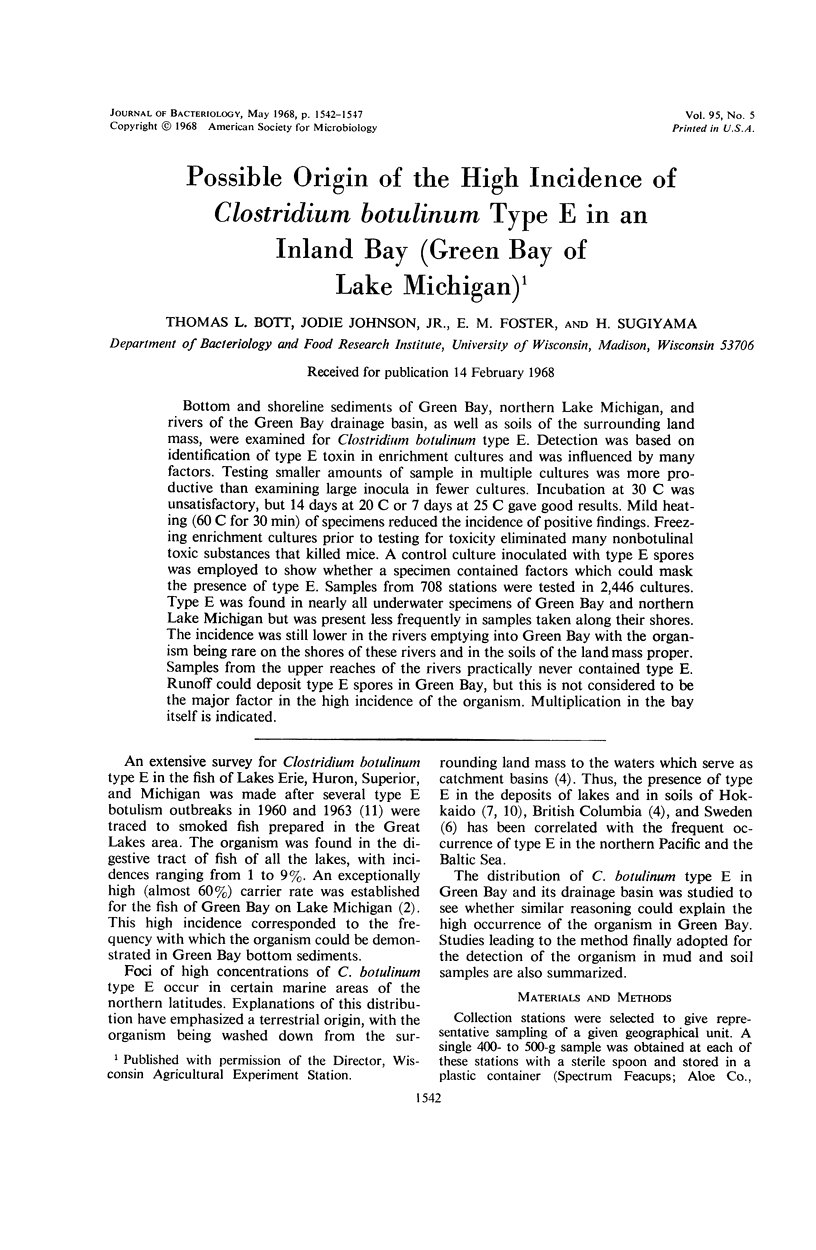
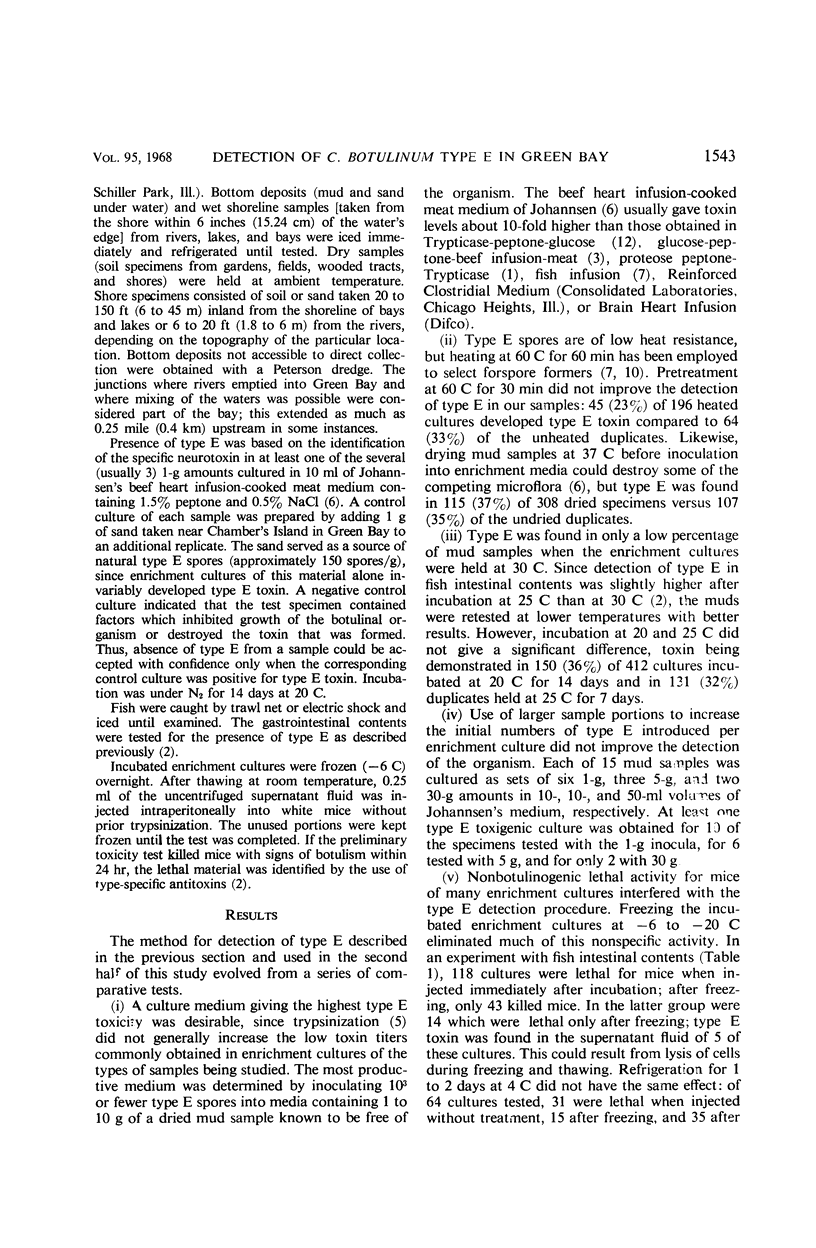
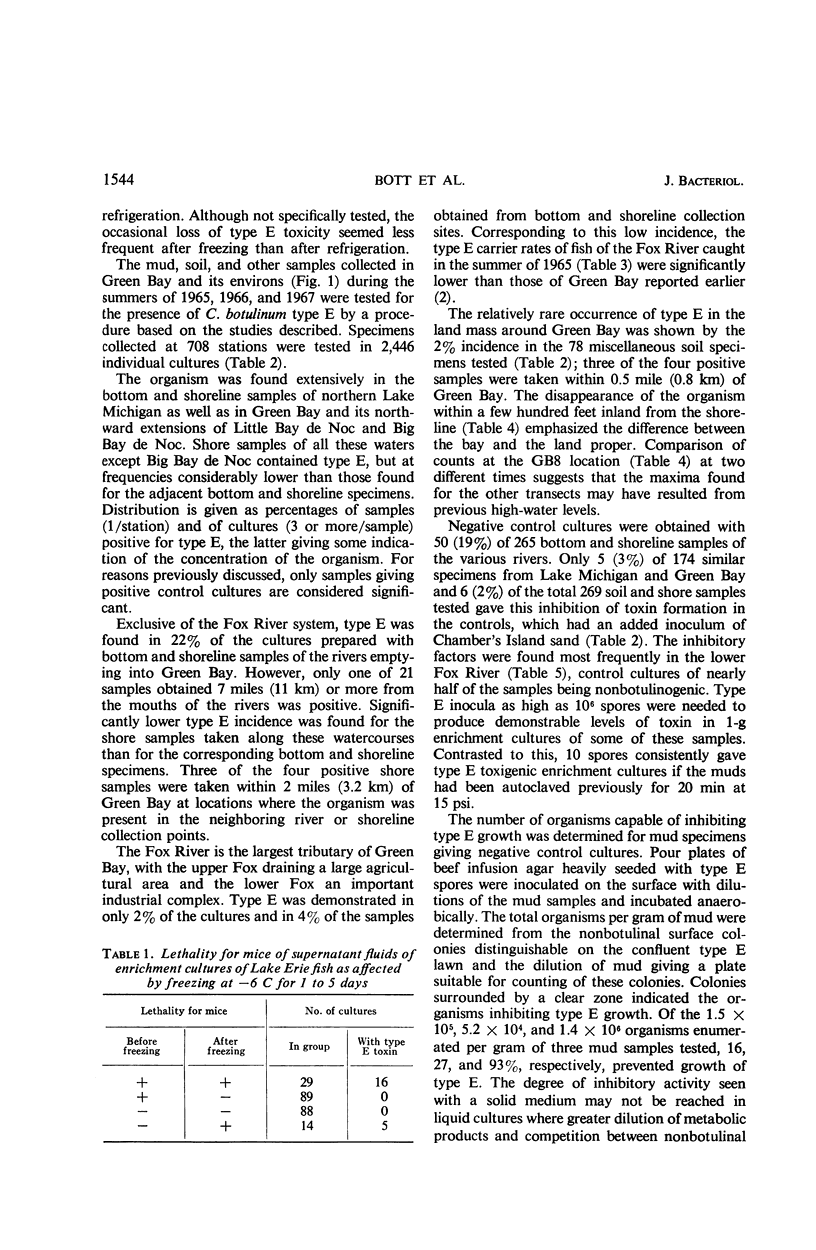

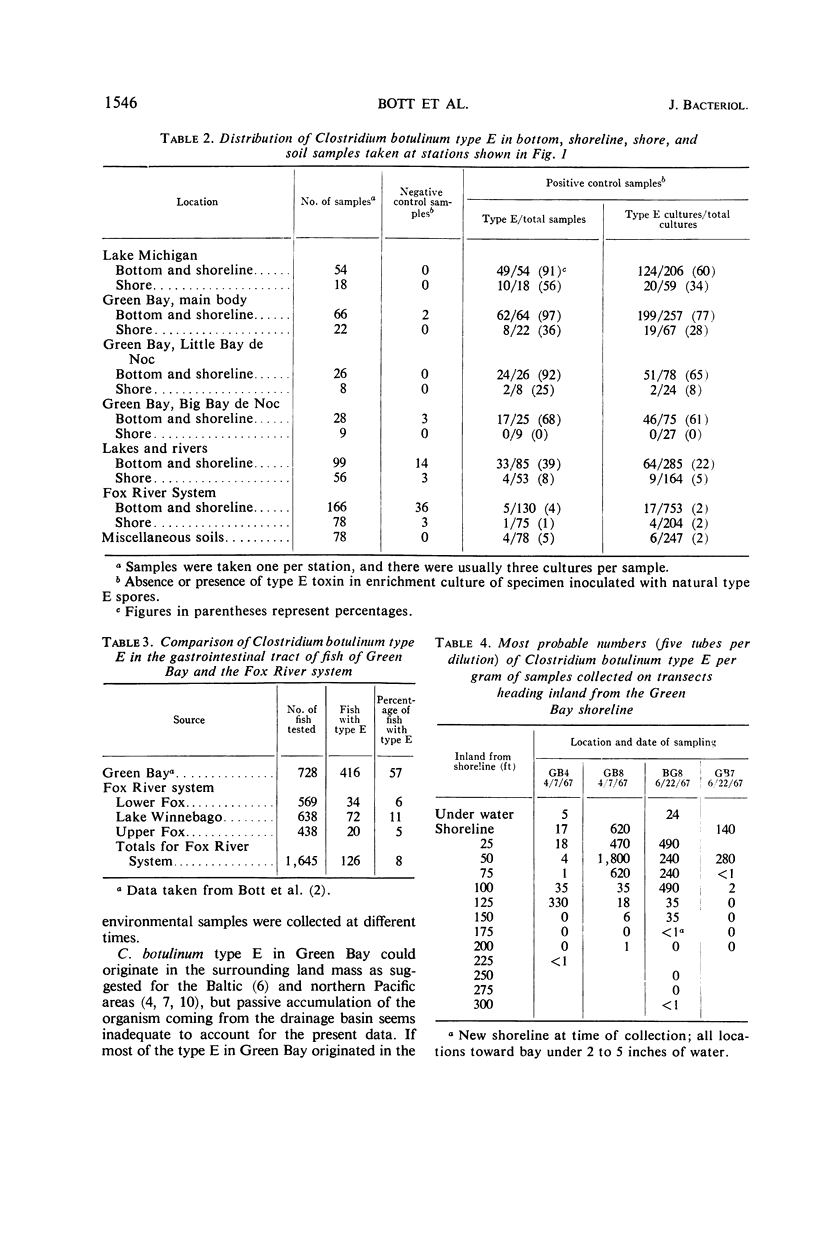
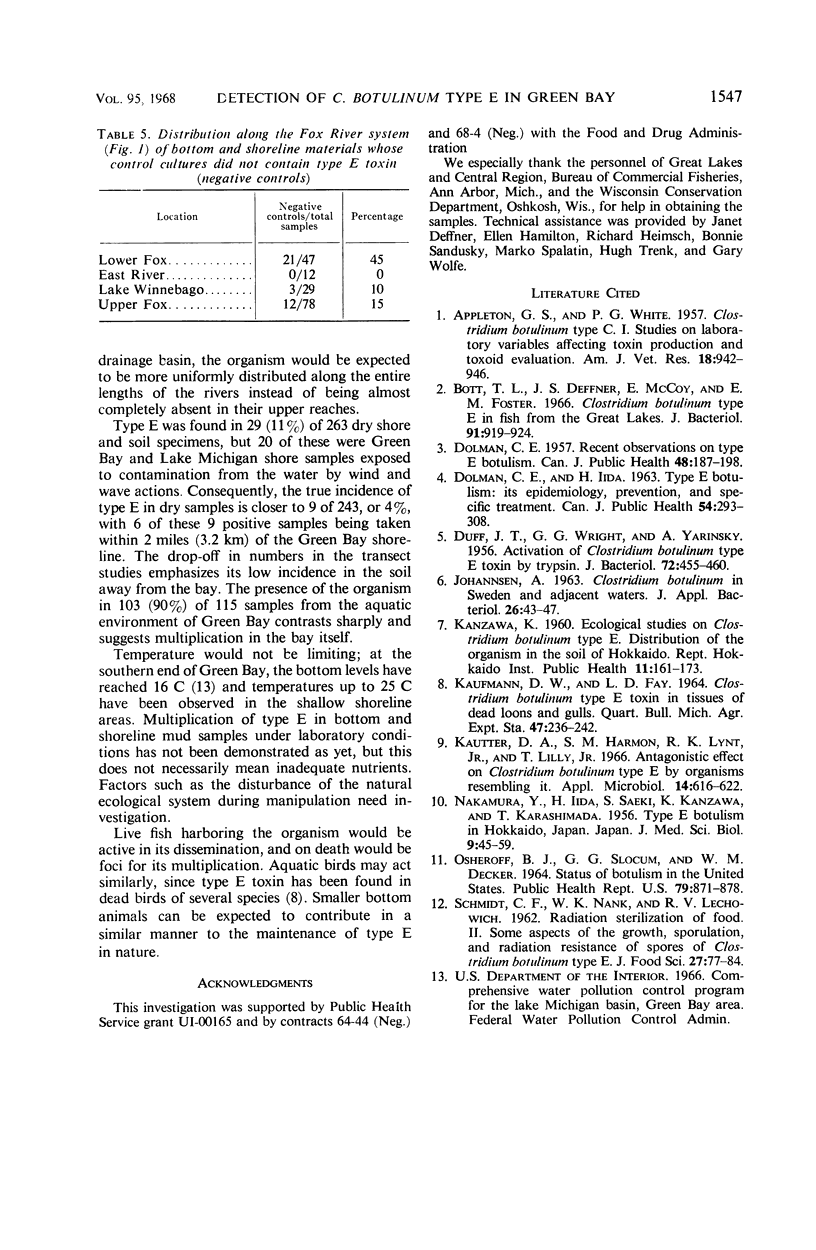
Selected References
These references are in PubMed. This may not be the complete list of references from this article.
- APPLETON G. S., WHITE P. G. Clostridium botulinum type C. I. Studies on laboratory variables affecting toxin production and toxoid evaluation. Am J Vet Res. 1957 Oct;18(69):942–946. [PubMed] [Google Scholar]
- Bott T. L., Deffner J. S., McCoy E., Foster E. M. Clostridium botulinum type E in fish from the Great Lakes. J Bacteriol. 1966 Mar;91(3):919–924. doi: 10.1128/jb.91.3.919-924.1966. [DOI] [PMC free article] [PubMed] [Google Scholar]
- DOLMAN C. E., IIDA H. Type E botulism: its epidemiology, prevention and specific treatment. Can J Public Health. 1963 Jul;54:293–308. [PubMed] [Google Scholar]
- DOLMAN C. E. Recent observations on type E botulism. Can J Public Health. 1957 May;48(5):187–198. [PubMed] [Google Scholar]
- DUFF J. T., WRIGHT G. G., YARINSKY A. Activation of Clostridium botulinum type E toxin by trypsin. J Bacteriol. 1956 Oct;72(4):455–460. doi: 10.1128/jb.72.4.455-460.1956. [DOI] [PMC free article] [PubMed] [Google Scholar]
- Kautter D. A., Harmon S. M., Lynt R. K., Jr, Lilly T., Jr Antagonistic effect on Clostridium botulinum type E by organisms resembling it. Appl Microbiol. 1966 Jul;14(4):616–622. doi: 10.1128/am.14.4.616-622.1966. [DOI] [PMC free article] [PubMed] [Google Scholar]
- OSHEROFF B. J., SLOCUM G. G., DECKER W. M. STATUS OF BOTULISM IN THE UNITED STATES. Public Health Rep. 1964 Oct;79:871–878. [PMC free article] [PubMed] [Google Scholar]


